How to free up space on Mac
Have you ever seen this notification on your macOS or iOS device?

It’s one of the most annoying things that you have to deal with but something that is very necessary because our hard drives have finite space and if you fill it up past the 80% mark you actually slow down your device and data is only going to get bigger with the coming years like movies are getting bigger images take up more space than they did two years ago so on and so forth. It’s really simple to find out how much storage space we have left in our macOS device. So let’s jump into the desktop over here we’re going to click on the Apple icon and click About This Mac. Click on the Storage tab which is right in the middle and it’ll calculate how much space you have left in your hard drive and what is taking up that space. So for my 2022 MacBook Pro my documents take up nearly 300 gigabytes of memory which leads me into my first tip of clearing up space on your Mac. Click on the Manage tab over here so this new window is going to pop up and it’s going to show you each partition of your hard drive and what is taking up that much space down to the specific file.
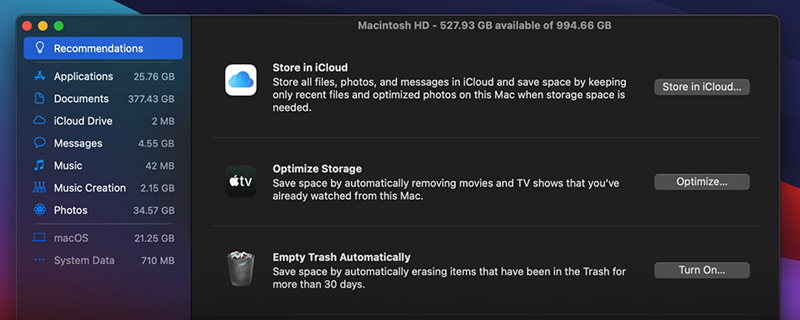
So the next thing that’s great about this window is that I can click on any of these partitions and delete some of these big files natively through this window. So I’m going to go in and geez every file is over a gigabyte which is a lot but I’m going to select some of these files that I don’t even remember and I’m going to manually delete them. So now I have these files highlighted. I’m going to click on this bottom right button that says delete. Yep, go ahead and now just for you to up 8.5 gigabytes of storage just like that. But obviously we have a gigantic list to work through and I don’t want to do it manually.
So the next tip that I’m going to be talking about is to use CleanMyMac X to expedite this process for us. CleanMyMac X is a fantastic software that makes this whole thing very easy but it’s also a one stop shop for clearing out stores for speeding up your RAM and also an anti virus thing. So it’s everything that you would ever need to protect your computer and to keep it running fast. So CleanMyMac X super duper recommended there is a download link into the description below. So go ahead click that maybe start a free trial or buy the whole thing really recommend it. Go ahead and open up CleanMyMac X right now and look at that beautiful UI. I’m going to go to the clean up section in the top left corner and click on System Junk and I’m going to run a quick scan and look at that we found three gigs of smart selective stuff but there’s 32 gigs of other system junk that I can delete which is definitely enormous. That’s 27 gigs right there. Let’s do let’s select everything and I’m going to click on Clean. Right here and we are going to run a quick little clean up right now and just like that a gigantic portion of my memories freed up from all that system junk. So clearly this software makes it super easy compared to the first method that I showed you.

The next thing that you should look into is deleting unused apps. One way that you can do it is to open up launch pad. So go ahead and open that up and now we are going to scroll through and see if we could delete any apps that we don’t use anymore so you can hold it down just like you would on a regular iOS device and once it starts jiggling anything with an X you can delete from this area. So let’s delete pages. So let’s go ahead and delete that. Yep, we’ll do that and there you go just like that. Pages is gone and we just saved up some memory. But one thing that you should know is that when you delete apps through this way you are actually not deleting the root files. You’re only kind of chopping off the top kind of like weeds out in your lawn. So one thing that you have to do is just go into your system files and delete it manually but that is very complicated. Another easy way of doing this is to again use CleanMyMac X. So I have the program opened up already and I will go to the application section which is in the bottom left corner and I’m going to click on Uninstaller. Now it’s going to list out all these apps that I have on my computer. How much memory it takes and I can go ahead and click on anything and delete it right then in there. And to uninstall right here with the big red button on the bottom and it should be done just like that. Now we deleted the actual icon like what I showed you at first and the root file. So it’s actually completely gone from the system. We do have a full video on this entire process. You can click on the banner up here and it will lead you to a more in-depth explanation of how to uninstall apps on your Mac.
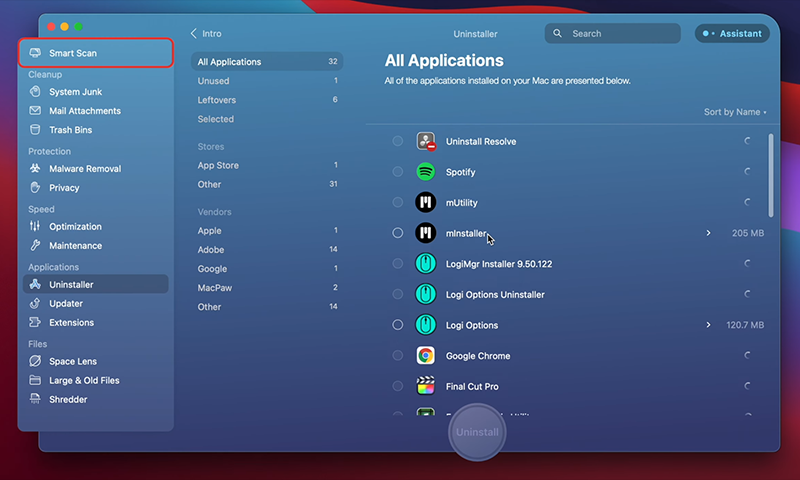
The next important thing we need to get into is to remove your browser’s cache. Now whether you Safari or Google Chrome the cache is what takes up kind of a hidden amount of space and what it is is that it’s storing collections of data that makes opening up your most popular websites a lot faster like Facebook, YouTube or whatever it may be. I’m going to open up Google Chrome, start a new window and go to the three dots over on the top right section over here and I’m going to go to More tools and then I’m going to go to Clear browsing data. So now I get to delete cache images and files, cookies and other site data browsing history. So we are going to delete these two clear data over here and it’s done. Just like that we just saved up some megabytes of data.
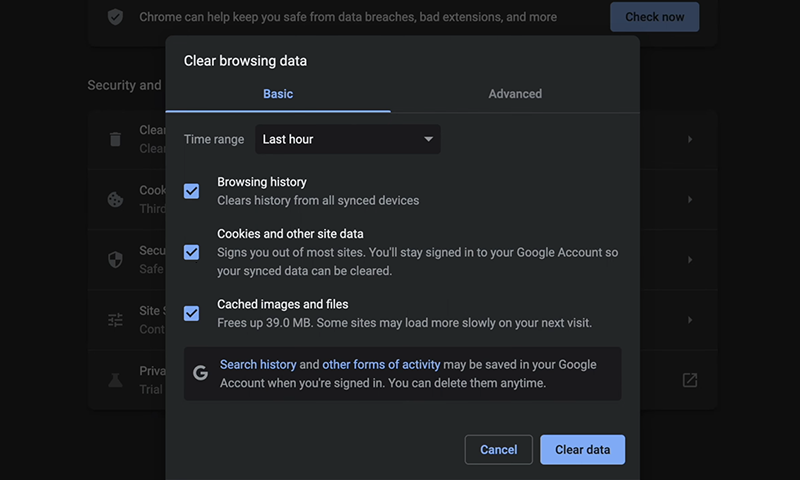
This next tip is pretty critical and that is to delete large and old files and that’s pretty self explanatory. There’s a lot of big files that we have on our computers that we haven’t seen in maybe years. So let’s open up CleanMyMac X to make this process very easy. I’m going to go to the bottom left corner where it says Large & Old Files and I’m going to run a quick scan and wow there are 200 gigabytes of large and old files. All right. So I selected an assortment of large and old files and it’s going to be 108 gigs freed up. So I’m going to click Remove right now. It’s going to get rid of that quickly for me and bam. 108 gigs freed up on my macOS device. That is fantastic. All made easy through CleanMyMac X down the link in the description below. All right.
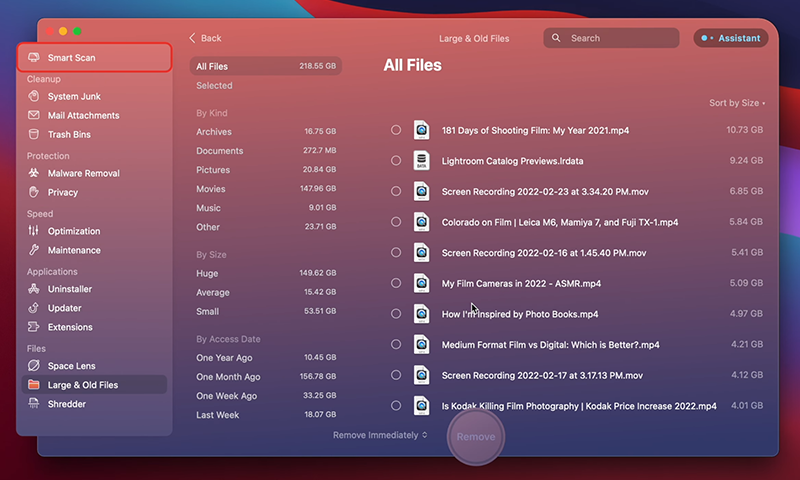
So this next one is about something that some of us are guilty of and that is having a super messy desktop like look at this trash heap. This is going to take up a lot of RAM from your computer because it has to display all these icons out at once so that you can quickly select them. But if you’re like me and you actually don’t need to look at all these icons super simple way of getting rid of this and freeing up space and RAM on your computer right click on any empty space you have on your desktop and click Use Stacks. Boom. Just like that. It all got assorted into I guess movies and screenshots for me personally that looks so much better and it clears up a lot of RAM.
The next small thing that you can do is to empty at your trash and even set it up for it to be automatically deleted every 30 days. So go to your trash icon right now minus completely empty but if there was something over there you could empty it right here. That’s to set it up for it to be automatically deleted every 30 days. Go to the Apple icon over here. Click About This Mac. Go to the Storage area over here like on the first tip click on Manage and now you have this setting over here in the third row that says Empty Trash Automatically turn on over here. Done and done just like that. Sometimes when you delete stuff you forget to actually completely delete it. So now it’ll always do that for you.
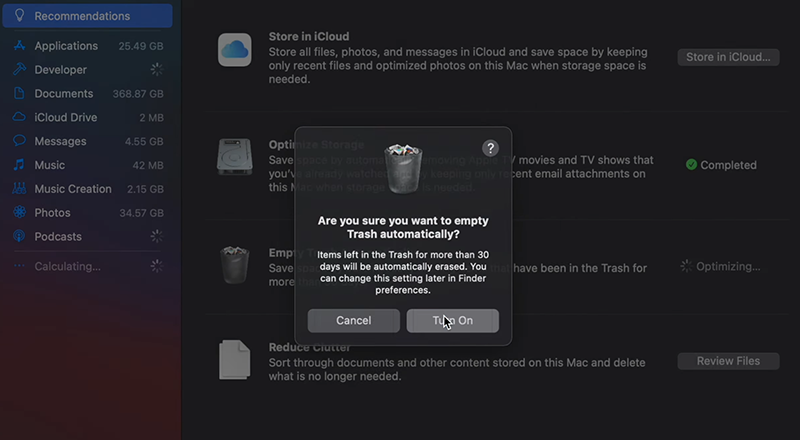
The second to last tip that I have for you is to compress your old file. So go to your Finder. Go to any area that you want to compress any of your folders or documents maybe. So I’m going to go to documents and go to Lightroom Pictures and these three folders take up a lot of space because it has a lot of photos because of my job. So now I’m going to highlight all of them right click it and click Compress over here.
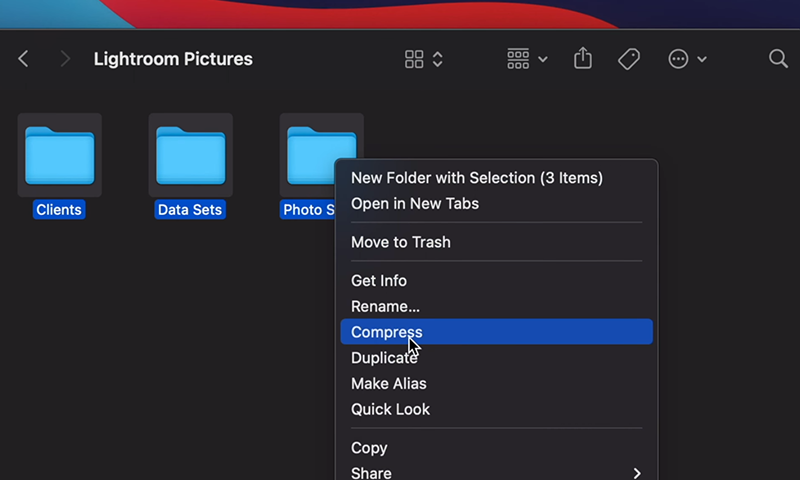
Good thing that Mac OS has a built in compressor so it’s going to do that for me right now 32 gigs of compression. And once that is done it’ll be compressed into a smaller sized file that I can store away into an external hard drive so that I can delete all of this but still have the original files in a smaller package in a safe space. The last tip that I have for you is to delete your old iOS backups that may be stored on your Mac OS device. So go to finder over here and then click on go in the top left corner and then go to go to folder. Go ahead and copy and paste this directory right here it’ll be available for you in the description to so go ahead and paste that and we’re going to be showing any backups that may be existing. If you do have any go ahead and drag it to the trash and delete it for me I’ve never plugged in my iPhone or any iOS device so I don’t have anything there. But if you do go ahead drag it to the Trash.
